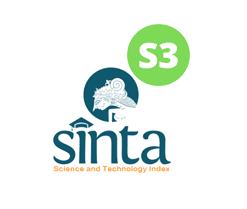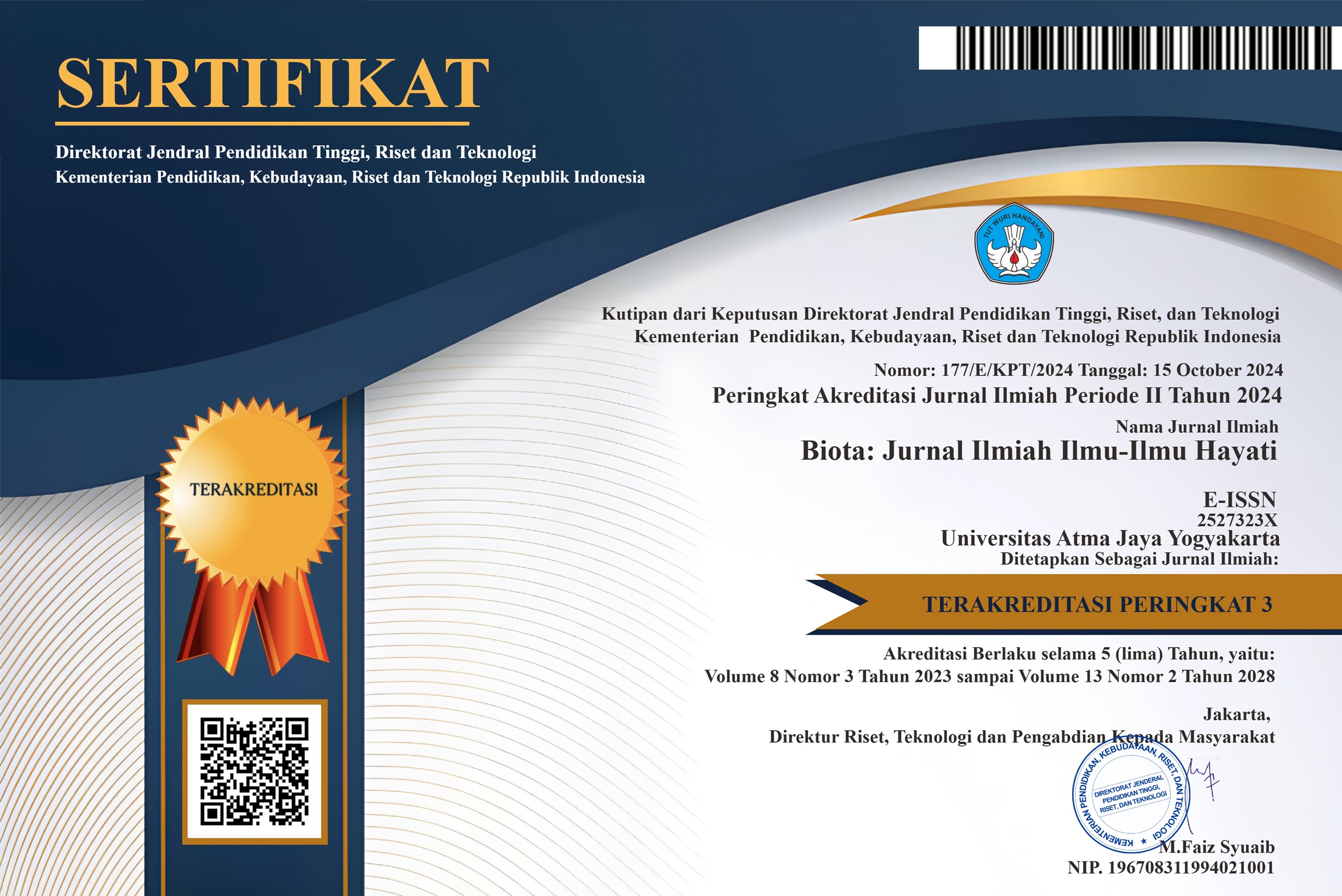Fitoekstraksi Sianida pada Centrosema pubescens Benth yang Tumbuh di Limbah Tailing Terkontaminasi Sianida
DOI:
https://doi.org/10.24002/biota.v14i1.2626Keywords:
hyperaccumulator, phytoextraction, cyanide, Centrosema pubescensAbstract
Contamination of mined soil and water affects not only to agriculture system but also
food chains and epidemiological problems. As soil metal can not be biodegraded,
remediation of soil heavy metal risks has been a difficult and expensive goal. Presently
there are several different strategies available for the clean up and restoration of
contaminated soils. One approach to minimize risks from some toxic pollutants is
phytoextraction using hyperaccumulator plants, known as phytoremediation. In this
research Centrosema pubescens was studied to examine its potency as
hyperaccumulator against cyanide. Although cyanide is not categorized as heavy
metal, its presence is considered as one of important toxic pollutants in the
environments. Detoxification of cyanide (CN) contaminated soils and waters with
plants seems to be a feasible option. Centrosema pubescens which proven tolerant and
dominant in the CN contaminated environment was used in this research. The plants
were grown in tailing waste media added by 0, 10, 20 and 30 ppm CN. Different pH
levels were applied, i.e.+ 6 and +5. The results showed that the plants were capable of
growing under high level of CN. The results indicated that Centrosema pubescens can
be considered as high tolerance and potentially effective in accumulating CN, i.e up to
3.564 ppm in roots and up to 3.564 ppm in shoot with concentration ratio (shoot/root)
up to 1.13. The plants also indicated high tolerance by producing high biomass under
high level of CN, i.e up to 36.517 g (under 20 ppm CN).
Downloads
Published
How to Cite
Issue
Section
License
Authors who publish with Biota : Jurnal Ilmiah Ilmu-Ilmu Hayati agree to the following terms:
- Authors retain copyright and grant the Biota : Jurnal Ilmiah Ilmu-Ilmu Hayati right of first publication. Licensed under a Creative Commons Attribution-NonCommercial 4.0 International License that allows others to share the work with an acknowledgment of the work's authorship and initial publication in this journal.
- Authors are able to enter into separate, additional contractual arrangements for the non-exclusive distribution of the journal's published version of the work (e.g., post it to an institutional repository or publish it in a book), with an acknowledgment of its initial publication in Biota : Jurnal Ilmiah Ilmu-Ilmu Hayati, and as long as Author is not used for commercial purposes.












